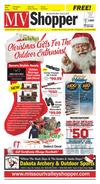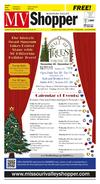081115_YKMV_A9.pdf
shop online at www.missourivalleyshopper.com
August 11, 2015 • Page 9
Management Considerations for the Cribbing Horse
Without knowing the exact
cause for cribbing behavior in
horses, prevention can be difficult,
explains Dr. Sara L. Mastellar ,
SDSU Equine Instructor.
“Horses that crib may spend
anywhere from 15 to 65 percent of
their day performing this stereotypy and approximately 4.4 percent
of horses in the US are cribbers,”
Mastellar said.
Cribbing is a stereotypy or
seemingly functionless repetitive
behavior performed by horses
which is characterized by grabbing
an upright object with the teeth
and pulling against the object with
an arched neck and sucking air.
Causes of Cribbing
Cribbing has not been reported
in feral horses that are free ranging
explained Mastellar. “Therefore it
is possible that aspects of management may cause the cribbing
behavior,” she said. “Specific
causes of cribbing are yet to be
determined and the behavior may
be due to a combination of factors.
Diet, genetics, boredom, stress,
and copying another horse have
all been suggested as causes of
cribbing.”
Below, Mastellar discusses possible causes as well as ways horse
owners can curb cribbing.
Diet
Horses that have more grain
in their diet have been shown to
be at an increased risk of developing stereotypies. “While research
shows that increased roughage in
the diet has been associated with
a decreased risk of developing
stereotypies,” Mastellar said. “This
holds true for cribbing, as one
study found that feeding concentrate to young horses immediately
after weaning was associated with
a four-fold increase in manifestation of cribbing.”
Mastellar added that the study
showed that the type of grain
seems to play a role as horses fed
sweet feed have been known to
crib more than horses fed oats.
Peer pressure
Whether or not horses learn
cribbing behavior from horses
that already crib has not been
substantiated. In a survey of horse
owners, only 1 percent of horses
were reported to have developed
a cribbing habit after exposure
to another cribbing horse, which
Mastellar said makes it appear that
horses are unlikely to learn cribbing behavior from one another.
Genetics
Genetics could also play a role,
as Thoroughbreds and warmbloods
are more likely to crib compared
to other breeds. “A study of horses
in Finland found the heritability
of cribbing has been estimated at
0.68, which means that cribbing is
likely to be passed onto offspring,”
she said.
Potential ramifications for the
cribbing horse
Horses that crib will have
increased wear on their incisors.
This wear may not cause problems
for the horse until they are older
and those teeth become in danger
of falling out, Mastellar explained.
“The additional wear on these
teeth may ultimately shorten the
life of the horse because they
are not able to eat as effectively
without these incisors,” she said.
“Additionally, cribbing horses may
be harder keepers due to spending
time cribbing instead of eating and
the increased energy expenditure
through the act of cribbing.”
Cribbing is a risk factor for a
variety of conditions. Most notably
cribbing horses are at risk for colic.
Additionally, Mastellar said it has
been found that cribbing horses
are more likely to have stomach
ulcers than non-cribbing horses.
“Cribbing is even a risk factor for
equine motor neuron disease. All
of these issues contribute to the
unpopularity of cribbing horses
and a potential reduction in market
value,” she said.
Preventing the onset of cribbing
behavior
Cribbing manifests in young
horses, Mastellar explained,
typically around 20 weeks of age.
“Many of these horses exhibited
wood chewing behavior before
manifestation of cribbing,” she
said.
Reduced risk of cribbing is associated with increased time spent
outside, social contact with other
horses and keeping foals solely
on grass through the weaning
process. “Once cribbing behavior
is established, it is unlikely that a
horse will ever completely cease to
exhibit the behavior,” she said.
Cribbers are different
There are some studies that
suggest that cribbing horses may
have some physiological and
mental differences from their noncribbing peers.
Horses that crib may also have
atypical hormone levels when compared to non-cribbing horses, Mastellar explained. “They have lower
plasma levels of leptin, which is
a hormone in regulating appetite
and the reward center of the brain.
These horses were also found to
have higher circulating levels of
gastrin, a hormone involved in triggering the production of stomach
acid ,” she said.
These hormone levels may
explain differences found between
cribbing and non-cribbing horses
in learning and stomach ulceration.
Horses that exhibit cribbing
behavior may react to situations
differently than their non-cribbing
counterparts. One study suggests
that cribbers learn differently than
non-cribbing horses. However,
owners responding to a survey
reported that cribbing horses
had less anxious temperaments
and were equally trainable when
compared to non-cribbing horses.
“Another study found that cribbers
tend to engage in oral activity
when stressed, whereas non-cribbing horses toss their heads or
paw when similarly stressed,”
Mastellar said.
When the cribbing horses were
prevented from cribbing, some
engaged in other oral activity.
“Cribbing may be a way that
these horses cope with stress.
Cribbing horses actually experience a slowing of heart rate during
cribbing. Levels of plasma cortisol,
a hormone associated with stress,
in cribbers was found to be greater
than that in non-cribbers,” she
said.
Mastellar added that researchers have conflicting opinions as to
whether or not preventing a horse
from cribbing is stressful for the
horse.
“These differences should
be considered when developing a management plan for these
horses,” she said.
Managing a horse that cribs
The decision on whether or
not to inhibit a horse’s ability to
crib should weigh the possibility of increasing stress on the
horse against the risk of colic and
other health issues associated
with cribbing, Mastellar explained.
Many managers also consider the
destructive nature of cribbing
behavior on barns and fences.
“Cribbers are motivated to crib
and will work as hard for an opportunity to crib as they will for a
chance to eat sweet feed,” she said.
2009 Hyundai Genesis
2014 Chevy Cruze 2LT
Silver, Leather, Loaded
Silver, Leather, 13K
#375525
“This motivation makes keeping an
established cribber from engaging
in cribbing behavior particularly
difficult.”
Many horsemen have tried
to prevent horses from cribbing
and their creativity can be seen
through the sheer variety of methods for preventing a horse from
cribbing.
The characteristic cribbing
collar is the most commonly used
method. These collars generally
consist of two straps. One goes
in front of the ears and the other
behind. The straps hold in place
a piece of galvanized steel under
the horse’s neck. “With the piece
of steel in position, it is uncomfortable to flex the neck and perform
cribbing behavior,” Mastellar said.
She added that care must be
taken that the collar is properly
fitted to reduce tissue damage.
“Cribbing collars are effective in
preventing cribbing in most horses,
but they are only effective when
the horse is wearing the collar,”
she said.
Hard Habit to Break
Horses that are allowed to crib,
after being prevented from cribbing for some time, will have an
increase in cribbing rate compared
to before they were prevented from
cribbing. “It’s as if to make up for
lost time,” Mastellar said.
Feeding Management
Feeding management is another
way that the horse’s manager can
affect how often a horse cribs.
“Cribbing rates increase after a
concentrate meal, so if possible,
formulating diets that contain more
forage and less grain can help to
mitigate cribbing behavior,” Mastellar said.
Although feeding horses little
and often is recommended, Mastellar said cribbing horses fed many
small concentrate meals may actually crib more because cribbing is
associated with feeding time. “They
actually fixate on the feeders and
spend more of their time cribbing,”
she said.
The energy and time spent
cribbing may make them harder
keepers than other horses. Excessive tooth wear may also affect the
ability of older cribbers to utilize
their diet.
15,995
$
#054182
14,995
$
2013 Ford F-350 Crew Cab
Lariat 4x4 Diesel
2014 Nissan Xterra X
Red,?4x4,?26K
Cribbers should have access
to turnout and the opportunity
to socialize with other horses.
Although, cribbing behavior is not
eliminated by providing turnout
and companion horses, Mastellar
said research shows that cribbing
rates are reduced. “Some cribbers
are isolated for fear of the behavior spreading to other horses. It
is unlikely for one horse to learn
cribbing from another and the
cribber’s welfare will benefit from
having other horses with which to
socialize,” she said.
If there is a need to keep a cribber stabled, providing a toy has
been shown to reduce cribbing
rates slightly. Turnout, socialization, and prevention of boredom
are all forms of stress reduction for
these horses.
Other methods of preventing
cribbing that are effective, but
require intensive management
include: elimination of cribbing
surfaces, taste deterrents, electrification of cribbing surfaces,
pharmaceuticals, oral antacids for
foals, surgery, and increasing the
time spent eating.
Take home message
Cribbing in horses is likely a
permanent behavior pattern once
established. “The exact cause of
cribbing in horses remains to be
determined, but may be related
to management, nutrition, and
genetics. Therefore, consider not
breeding to a horse that cribs, providing plenty of forage at weaning,
and allow horses plenty of turnout
and interaction with other horses
to reduce the chances of a horse
becoming a cribber,” she said.
Cribbers are more prone to certain health issues, including colic.
They may have differences in their
learning and how they cope with
stressful situations when compared
to non-cribbing horses. Due to this,
Mastellar said a horse owner’s
decision to inhibit a horse from
cribbing should weigh the possibility of increasing stress against the
possible health risks of cribbing.
“Besides inhibiting cribbing behavior, a manager can adjust feeding
and turnout conditions to reduce
cribbing rates,” she said.
?iGrow
2012 Ford Fusion SE
4 Cyl, 48K
#323510
15,995
$
2008 Dodge Ram 2500 Quadcab
Blue, 4x4, Diesel, Manual Trans
White
24,995
#802323
#A75125
2014 Dodge Journey SXT
2013 Ford Taurus Limited
Grey,?V6,?AWD
Red
#140741
18,995
$
#193192
2008 Ford Taurus Limited
#127267
RENTALS
AUTOMOTIVE
21,995
2006?Chevy?2500?HD?Crew
Deep Blue, Leather
REAL ESTATE
37,995
#158895
2012 Ford F-150 X/Cab XLT
4x4,Black, Ecoboost
#A71375
12,995
#131198
18,995
$
2014 Ford F-250 Crew Cab
Lariat 4x4 Diesel
2011 Ford Taurus SHO AWD
Silver,?36K,?1?Owner
28,995
$
2013 Ford Taurus Limite
Silver, Leather
White,?6.0L,?AT,?4x4
$
28,995
#148868
17,995
$
2006?Chevy?Malibu?LT
White
White
EMPLOYMENT
MERCHANDISE
#116682
COUPONS
the Missouri Valley
Shopper and
missourivalleyshopper.com
is your complete source
for buying and selling.
Everything you need
is just a click or call away!
Place an ad today by calling
605.665.5584
MV Shopper
24,995
$
FOR
60
MO.
#B16770
W.A.C.
39,995
#168676
6,995
On Vehicles 2011 or Newer
MOODY MOTOR CO.
1-800-745-5650
Niobrara, Nebraska
Business? Phone?402-857-3711?•?1-800-745-5650
www.moodymotor.com
OPEN 7 DAYS A WEEK
M I S S O U R I VA L L E Y
MATT MOODY
ALAN KEMP
MATT SCHAA
PAT HAWK
Monday thru Friday: 8:00 a.m. - 5:30 p.m.
Saturday: 8:00 a.m. - 4:00 p.m. • Sunday: Noon - 4:00 p.m.

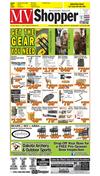


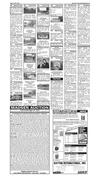





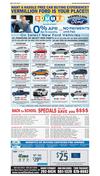
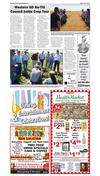
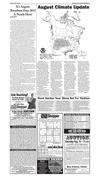
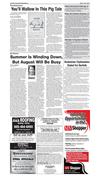

 Previous Page
Previous Page

